10 Of The Oldest Artifacts In The World That You Can Actually Go See
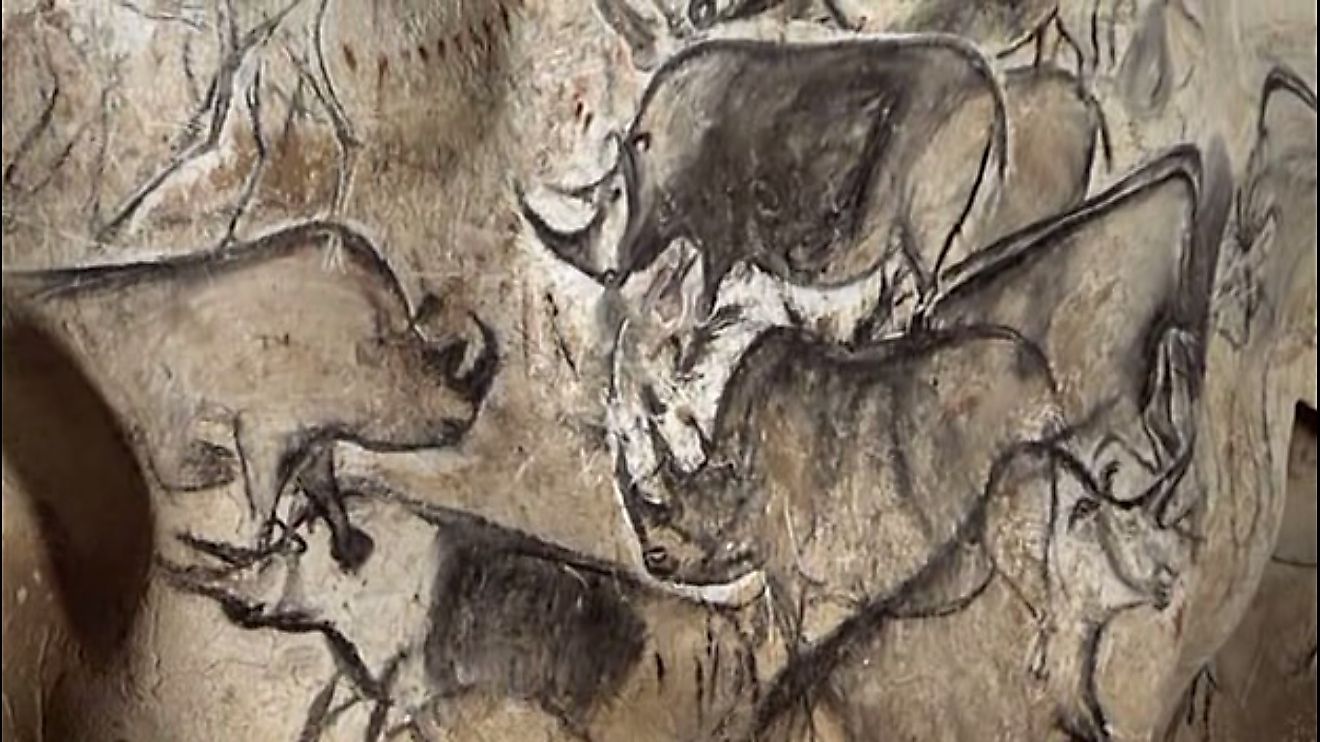
- The Lomekwi stone tools discovered in 2015 are about 3.3 million years old, much older than the Oldowan tools which are 2.5 to 1.2 million years old.
- The oldest depiction of humans is not the Zoomorphic Lion Man but The Venus of Hohle Fels which is about 40,000 years old.
- The oldest masks discovered were made of stones and are about 9,000 years old. Older masks were made of degradable materials that decomposed.
There are millions of artifacts from the ancient world that shed light on how our ancestors lived many millennia ago. Some are basic tools, while others are unique, intriguing, and expand our knowledge of history. These are some of the oldest artifacts.
Oldest Stone Tools
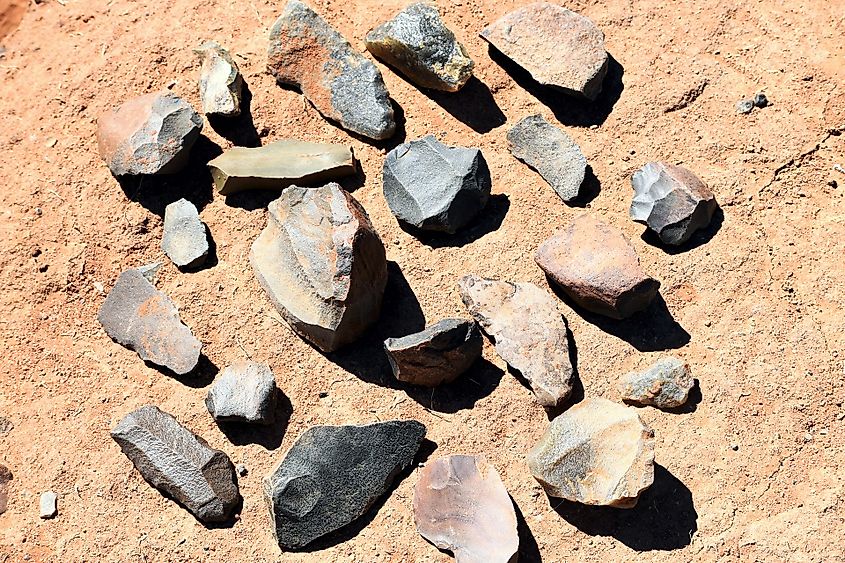
The Lomekwi stone tools are the oldest stone tools known. They are about 3.3 million years old and were excavated at the Lomekwi archaeological site along the shores of Lake Turkana in Northern Kenya in 2015. The stones show signs of intentional knapping to make them sharp. The discovery disapproves the assumption that Homo habilis invented the art of making tools. The Lomekwi tools show signs of rudimentary techniques, unlike the Oldowan tools, which show signs of more advanced tool-making techniques. It is unclear who made the tools, but they are proof that species before the Homo genus were more advanced than initially thought. Some of the tools are located at the Nairobi National Museum.
Oldest Coin
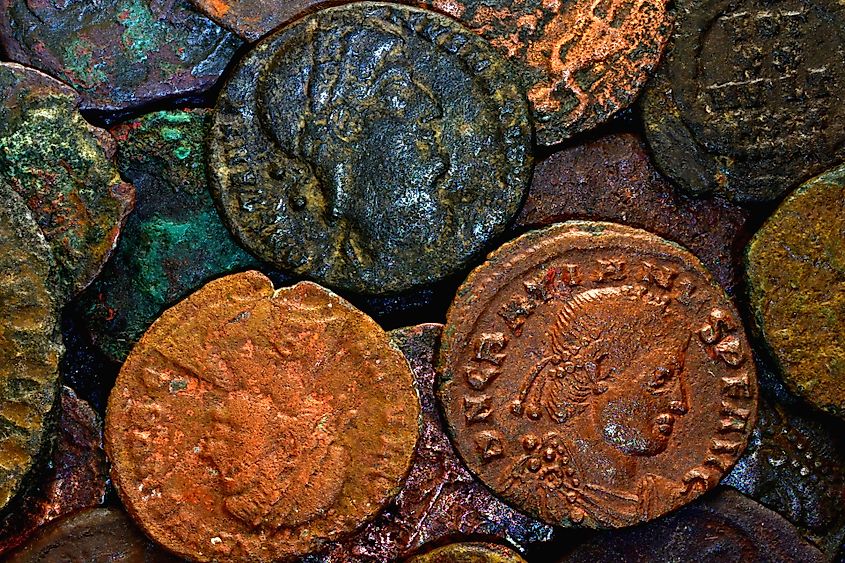
Before the invention of money, barter trade was the preferred mode of exchanging goods. Gold, silver, and other precious metals later emerged. Archaeologists agree that the trite or Lydian one-third stater was the first official coin to be used as currency. King Alyattes of Turkey, minted it for use in his territory. The coin bears the portrait of a lion's head in the front and a double-square incuse punch on the reverse. It is made of a gold-silver alloy, making it harder than pure gold. It was used in Turkey before spreading to Greece and the Western world. The coins were made between 660 and 600 BC. They are not particularly rare by coin collector standards and can easily be found for less than $2000. The coins can be seen in museums in Turkey and Europe.
Oldest Depiction Of Human
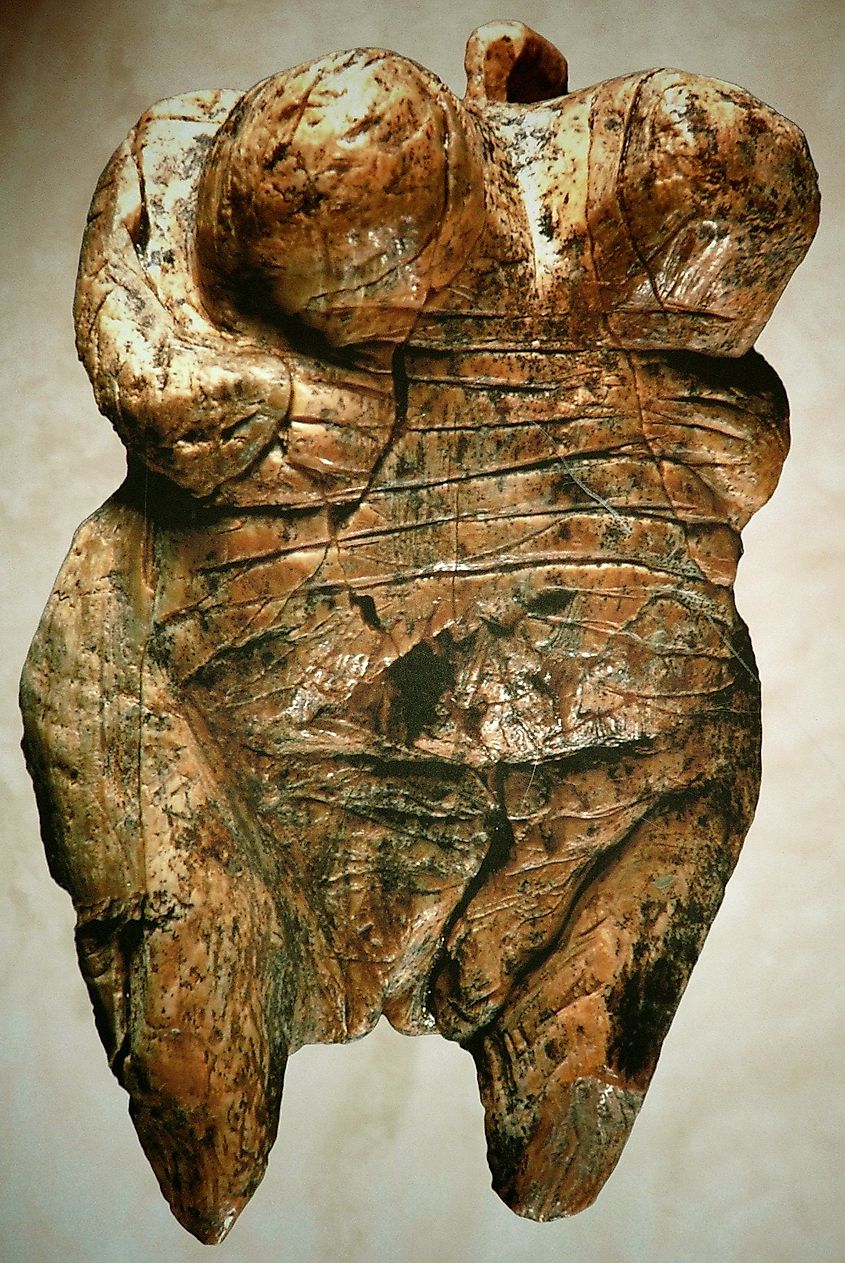
The Venus of Hohle Fels is the earliest depiction of the human form. The Zoomorphic Lion Man is much older but depicts a half-human figure. The statue is 2.4 inches tall and made from mammoth ivory. It is believed to be about 40,000 years old and depicts a woman with exaggerated buttocks, breasts, and a protruding vulva. Though it lacks the head, it has a circular ring on its neck, portraying a necklace. The Venus was extracted in the Swabian Jura region, southwest Germany, which is also the site where the oldest musical instrument was discovered in 2012. It is located at the Prehistoric Museum of Blaubeuren.
Oldest Musical Instrument
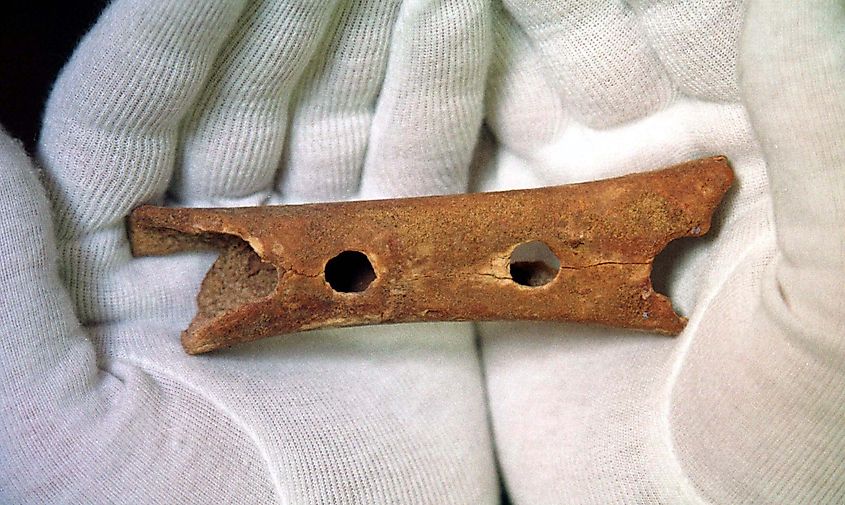
The oldest music instruments are born flutes discovered in 2012 in Geissenkloesterle Cave, Germany. Carbon dating puts the age of the artifacts between 42,000 - 43,000 years old. One of the two flutes is made from mammoth ivory, while the other is curved from a bird's born. Archaeologists excavated several artifacts alongside the flutes and believed that the region was a corridor for the flow of innovations into Europe. Music was used for religious rituals and recreation. Some researchers argue that music played a vital role in creating a social culture that helped humans outlive Neanderthal man.
Oldest Abstract Design
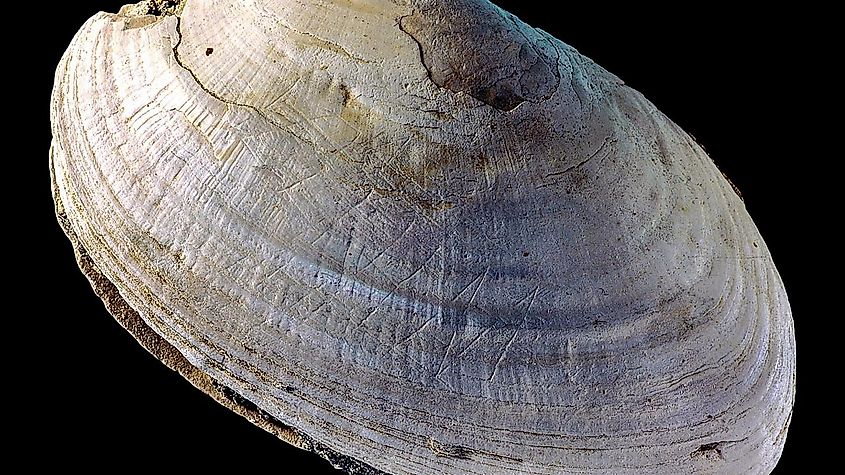
The oldest evidence of abstract design was discovered in mollusk shells gathered around the island of Java in Indonesia in 2007. The shells appeared to have unnatural etchings on the surface, prompting researchers to study them. In 2014, archaeologists concluded that the shells had been modified into tools, probably by Homo erectus. The zigzag pattern of etching is the oldest abstract representation to date. Carbon dating suggests the shells are about half a million years old. Holes found in many of the shells were made from shark teeth also found at the site.
Oldest Boat
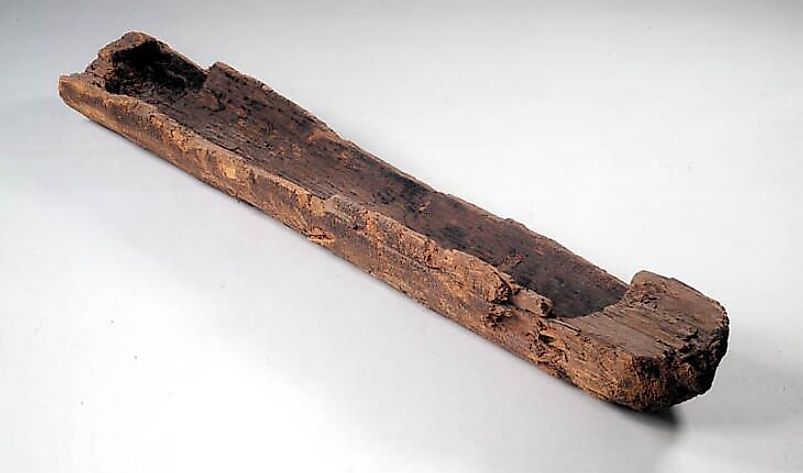
The oldest boat ever discovered is a Pesse canoe that was found in 1955 in the Netherlands during a road construction project. It was constructed by digging out the inside of a log with a sharp object, probably an axe. Several archaeologists dismissed the finding, claiming that such an object could not float on water with people on board. Others argued that it was an animal trough, but humans had not yet domesticated animals at that time in the Netherlands. Drents Museum created and tested a replica, proving that the object would have floated.
Oldest Cave Painting
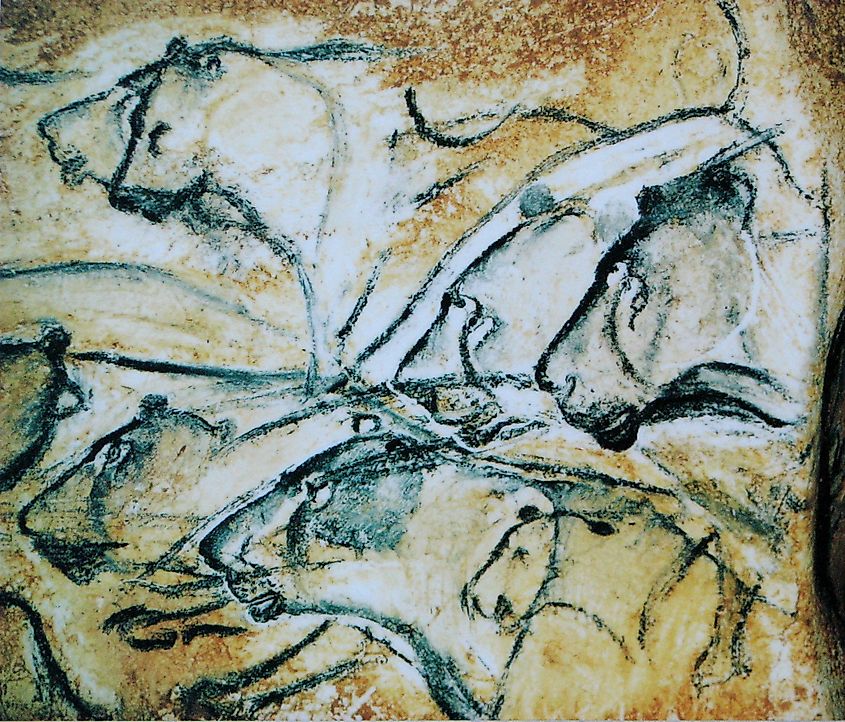
Until 2014, the paintings of Upper paleolithic animals in Chauvet Cave, France, were thought to be the oldest at between 30,000 and 32,000 years old. There was no evidence to contradict the finding and archaeologists believe that this symbolized an explosion of symbolistic artistic art in Europe. In September 2014, archaeologists discovered cave paintings on Sulawesi island, Indonesia, that were about 40,000 years old. A painting of a local animal known as babirusa was found to be at least 35,400 years, making it the oldest non-figurative art. The red dye associated with cave paintings dating back 100,000 years ago has been found in Africa and Israel, proving that the act of cave painting was not invented in Europe.
Oldest Masks
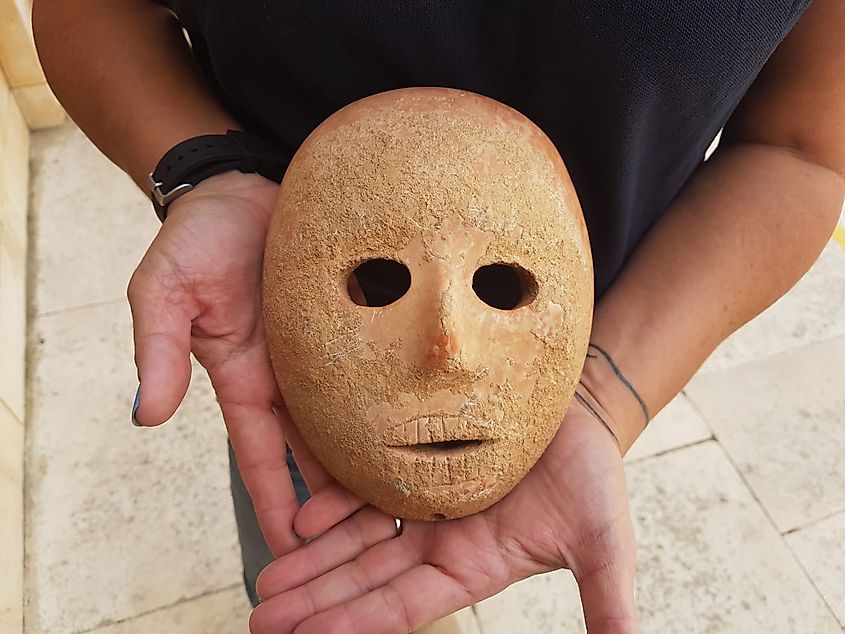
The oldest masks are a collection of 9,000-year-old stone masks that were discovered around the Jordan hills and Judean desert in Israel. They are currently on display in a museum in Jerusalem. The masks are stylized faces with holes on the edges for threading. Researchers are not sure what exactly they were used for but resemble masks worn during religious functions. There are older paintings depicting people wearing masks, but many were made of biodegradable material such as tree bark.
Oldest Jewelry
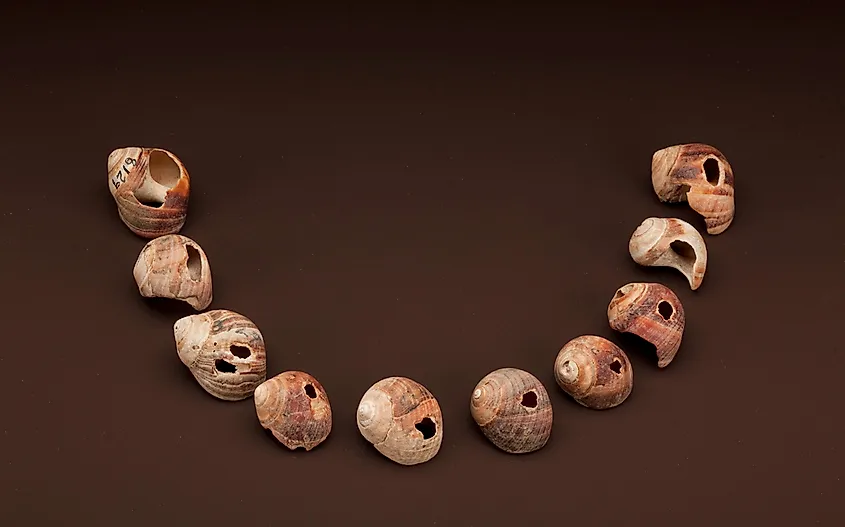
The Skhul Cave Beads are the oldest known jewelry. The two beads were discovered in Skhul cave in Israel and are thought to be at least 100,000 years old. A third near similar bead was discovered in Algeria and is believed to be between 35,000- 90,000 years. The shells were derived from marine snails found three miles from the cave. Researchers believe the ornaments were of cultural significance since people had to travel long distances to acquire them. The artifacts also suggest that the art of personal ornamentation began earlier than initially thought.
Oldest Painting Studio
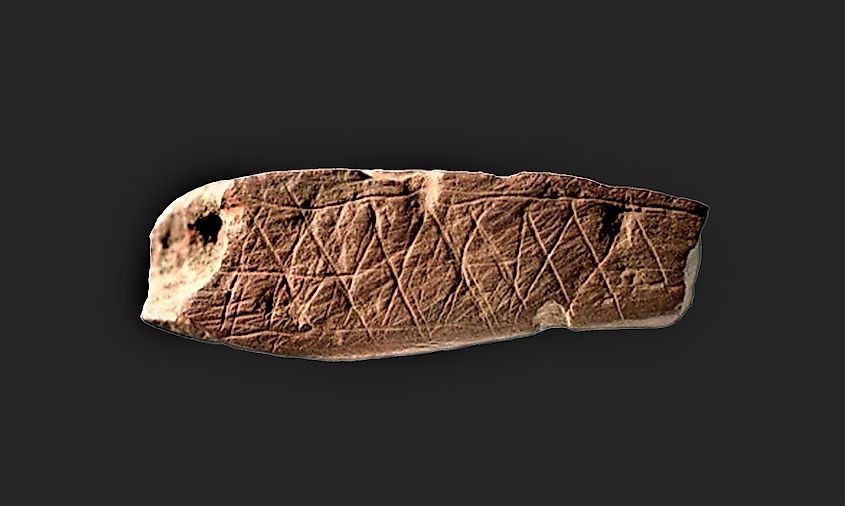
The Oldest Cave Painting Studio was discovered at the Blombos Cave archaeological site that has been under excavation since the early 1990s. The studio, which was discovered in 2008, consisted of red dye in two abalone shells. Archaeologists also discovered colored clay, hammerstones, grindstones, and bones. The ancient people heated bones to extract oil, which they mixed with red ore to create paint. It is unclear what they painted since no paintings have been discovered on the site.











